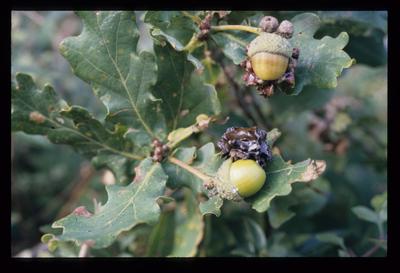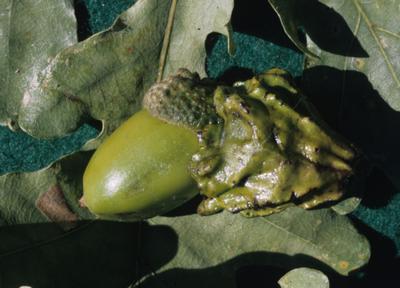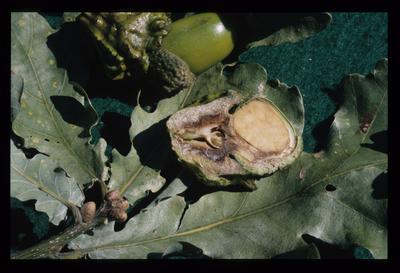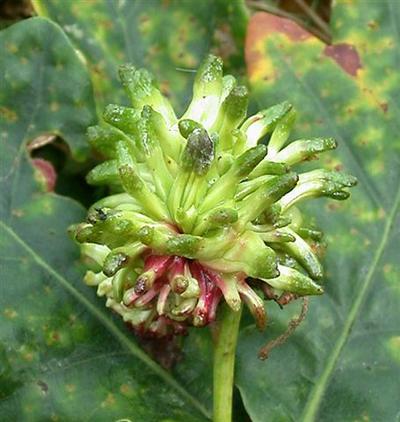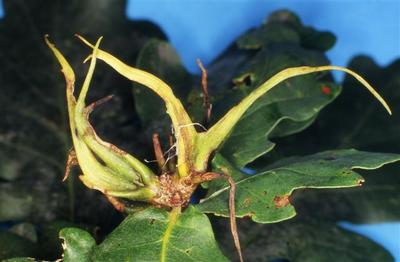Many of the galls on oak trees are caused by the egg laying activities of small wasps of the family Cynipidae. In their life histories these wasps have alternating sexual and asexual, or agamic, generations at different times of the year. The females of the agamic generation overwinter and the sexual galls that they cause to develop the following spring produce male and female wasps later in the year. A well known example is the Knopper gall on acorns. This is the agamic stage of the gall wasp Andricus quercuscalicis which spread rapidly over the country in the early 1970's from the Exeter area.
New to Worcestershire is another distinctive acorn cup gall, the Gooseberry gall, Andricus grossulariae. First seen in Britain in Berkshire in 2000, it appeared on young oak trees at Lower Smite Farm in 2008. Its sexual gall, not so obvious, develops on the catkins of Turkey Oak in the spring.
Another gall not yet found in Worcestershire that was first recorded in Britain in 1997 near Maidenhead has begun to spread further afield. This is the Rams-horn gall, Andricus aries. It is not an acorn gall but develops in a variety of noticeable forms on a bud on a twig. The differing forms are due to the activities of parasites and inquilines. Its sexual stage is found on the catkins of Evergreen Oak.
There is a number of other Oak galls recently found in the U.K. that have not yet been recorded in Worcestershire. Most of these were first recorded in the S.E. of England and are now spreading further afield. Do let the WBRC have details of your findings.
